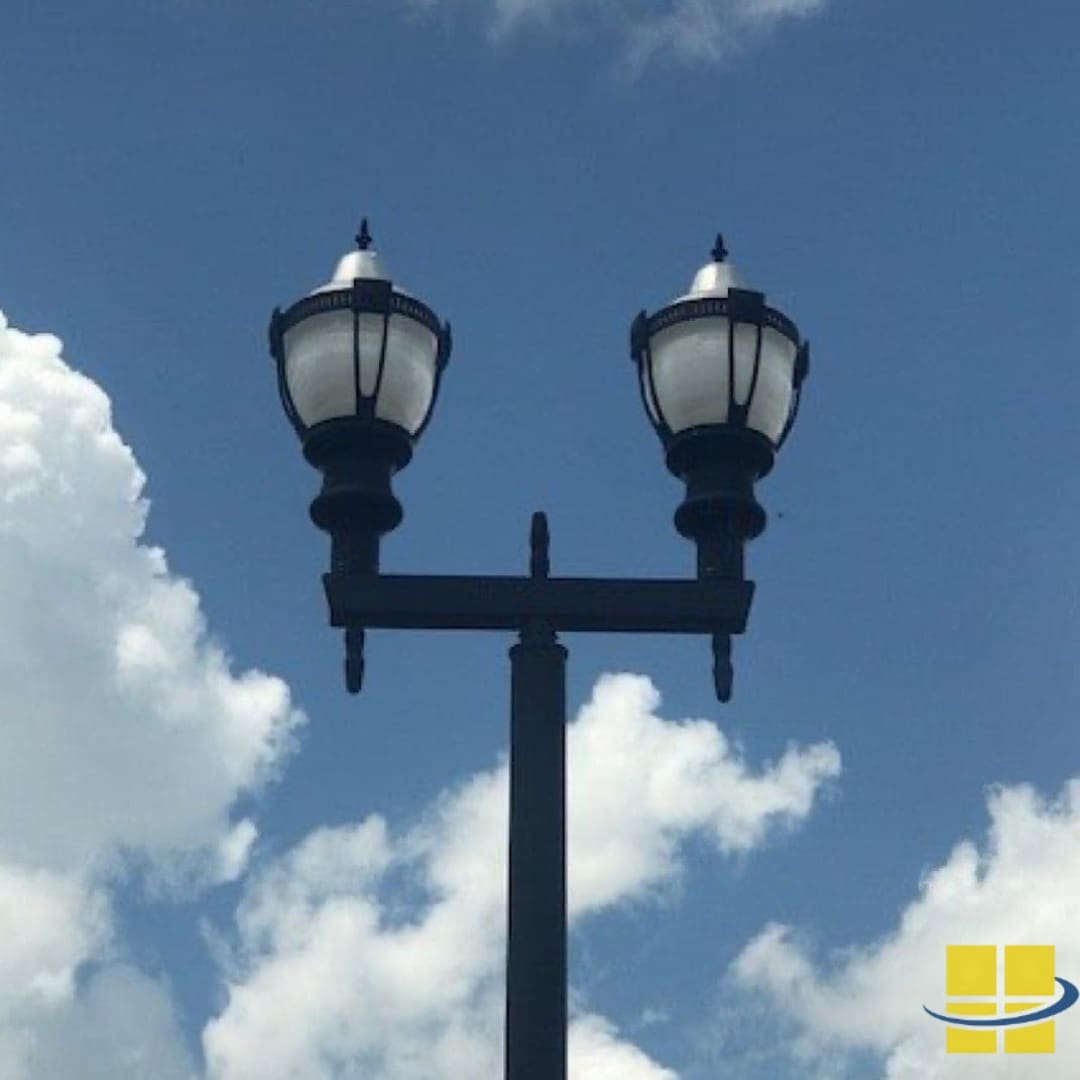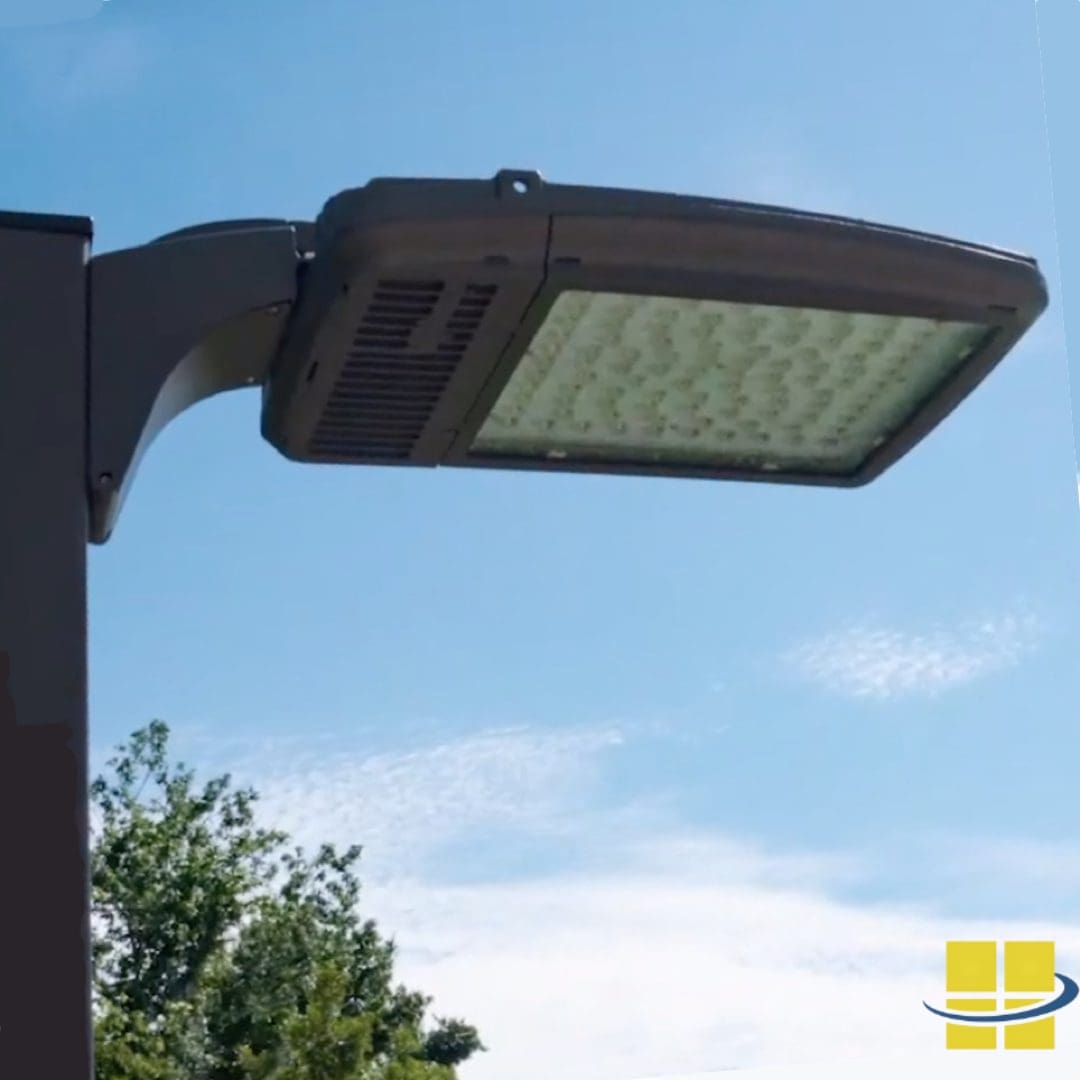
What Are Parking Lot Lighting Requirements?
There are two basic categories for parking lot lighting requirements. The first set of parking lot lighting requirements are your lighting objectives including illumination to provide for safe egress. The second set parking lot lighting requirements are complying with state, county and/or local lighting ordinances. Most communities have ordinances that will influence the design and layout of your parking lighting. Until you know what you want and what your local community’s requirements are for outdoor lighting, you can’t design your parking lot lighting.
Speak to an Access Fixtures Lighting Specialist about Parking Lot Lighting Requirements
What Are Your Parking Lot Lighting Requirements?
Property owners, developers, and managers, typically prioritize the following parking lot lighting requirements.
Parking Lot Light Fixture Style
Style involves branding. While a stadium of big box store might want 40’ to 60’ poles and high mast parking lot lights, that would not be appropriate for a fine dining restaurant or a country store. Post top lights might be more appropriate for the restaurant. The country store might opt for something on a wood pole. There are lots of styles available for parking lot lights and for parking lot poles. Be sure to discuss style with a lighting specialist.
Mounting Height
The mounting height of parking lot lights affects the area over which the light is distributed. Light distribution is directly correlated to the mounting height of the fixture. Light distribution increases with height. As the mounting height increases, the distance between the light poles and light fixtures increases, reducing pole and fixture count and thus cost. Consequently, to control cost, it is a frequent preference to have a mounting height of 20’ or higher. This may conflict with style, so obviously there are multiple considerations.
Average Light
What is average light and what is enough light for a surface parking lot? One consideration is how bright the surrounding area is. A general rule is an average of 2 footcandles (fc) and a minimum of 1 fc, although the minimum fc is lower in many instances. A lower fc is acceptable if the max/min ratio is lower as detailed below in even lighting, which is crucial for achieving good lighting uniformity.
Even Lighting
It is also important that the light be even. Measured using a Max/Min Ratio, the calculation is the fc in the brightest area of the parking lot divided by the fc in the least bright area in the parking lot. A study by the Lighting Research Center at RPI resulted in customers feeling safer and having better visibility even with lower light levels if the light was more even. While the IES recommends a max/min ratio of 15:1 for parking lots, the study compared a max/min ratio of 10:1 with a max/min ratio of 3:1.
Ensuring even lighting also helps in reducing light pollution, which is crucial for adhering to local lighting ordinances.
Parking lot light controls
Parking lot lighting controls range from the simple light switch to photocells, occupancy sensors, DALI, and wireless controls. Motion sensors are another effective control option, enhancing both energy efficiency and security. The most cost-effective option is a timer clock combined with a photocell or photocells. Click here to read more about parking lot lighting controls.
What Are Your Community Parking Lot Lighting Requirements?
Just about every community has parking lot lighting ordinances that dictate requirements for your parking lot lighting. Ordinances may cover the maximum mounting height for high parking lighting. Other aspects regulated may include fixture design, fixtures style, dark sky compliance, max/min ratios, maximum fc, minimum fc, and the list goes on.
Click to view a pdf of a parking lot lighting ordinance.
A summary of parking lot lighting requirements that may be mandated through ordinances follows.
Mounting Height
Just about every community specifies the maximum mounting height of parking lot lights. The maximum mounting height typically ranges from 8’ to 20’, with some exceptions for industrial facilities. Even the cement pole mount/pedestal for the light pole might have a regulated height and naturally the height is measured off the surface of the parking lot, not the top of the pole mount.
Full Cut Off
Full cut off requires that there is little to no up light from the lights. That means that the lights can’t be used to project light across a broad area. The light fixture must be aimed down to keep the sky dark. LED parking lot lights have specialized optics so the fixtures can still distribute the light broadly without causing the light to go up.
Dark Sky Compliant
Dark sky compliant builds on full cut off. It means that the light fixture has to be full cut off, needs to be 3000 Kelvin or below, and has to have a fixed or have a nonadjustable mounting arm.
Energy Consumption
Ordinances that regulate energy use may be as simple as meeting a federal guideline or as complex as to limit the wattage per square foot of the parking lot, encouraging the use of energy-efficient lighting solutions based on varying factors. An example of the latter is CA Title 42.
Maximum Light
Maximum light ordinances regulate the maximum light that can reach the surface of the parking lot. A typical maximum is 10fc, but the maximum light could be set as low as 5fc depending on the community. A low fc requires more fixtures with lower wattage to minimize hot spots, areas of fc above the maximum fc permitted on the surface of the parking lot.
Average Light
Average light is the measure of light across a parking lot. Average light may be the average of each square foot of the parking lot or the average of 5’ or 10’ square areas within the parking lot.
Minimum Light
Minimum light is the regulation of the lowest level of fc that there can be on the parking lot surface. This protects against areas in the parking lot being too dark.
Maximum Minimum Ratio – Max/Min Ratio
Max/Min Ratio is the fc in the brightest area of the parking lot divided by the fc in the least bright area in the parking lot. An acceptable or community specified max/min ratio might be 15:1, and lower max/min ratios facilitate a lower average fc. One community specified a maximum of 5fc and a max/min of 5:1, which is quite challenging. Ultimately, your community’s ordinance will be the deciding factor. Achieving the right max/min ratio is a critical aspect of effective parking lot lighting design.
Max FC at by Entrances and Exits
This ordinance limits the fc on the surface of the parking lot where it meets sidewalks or the street. The objective may be to limit how bright the area is so as not to distract drivers and to ensure the area is bright enough so a driver can see a pedestrian.
Light Trespass
Light trespass is the defined in three ways, the ability to see the light off in the distance, the ability to see the light source a nearby property, and light emitted onto a neighboring property. Lighting ordinances may deal with any number of the three. The ability to see the light off in the distance refers to being able to see that an area some distance away is illuminated such as a sports field, airport, or parking lot. This is less regulated than the other two forms of light trespass. Requiring the light source to be shielded is more common. The most common light trespass ordinance regulates the light emitted onto a neighboring property. Depending on the community this could be anywhere from 1fc on the surface at the line to 0.05fc at 3’ above the surface of the ground by the property line. Click to learn more about light trespass.
Hours for lighting
Hours of lighting regulates what hours the lights can be used. Examples of hours of lighting being regulated include lights to be turned off or dimmed to a specified percentage of maximum light levels 15 minutes after closing, after 10pm, or after midnight and before 6am.
Style
Many communities now dictate the style of fixtures that may be used in the community or sometimes a small area within the community. This is required to maintain the character of an area such as a historical district. An example from one community’s ordinance states, “must have antique globe/coach style light poles and fixtures as approved by the Planning Official.”
Kelvin (k) and Nanometers (nm)
Many communities have parking lot lighting requirements that specify the Kelvin or nanometers. Reasons vary from aesthetic to environmental. Kelvin might be specified at 2200K to keep the feeling of a historic district that was previously illuminated by gas lights. It may limit the Kelvin to 4000K so the light emitted doesn’t appear bluish. Examples of environment specifications for Kelvin and Nanometers include 2200K for dark skies or migration of birds or bugs and 590nm for wildlife and sea turtles.
Color Rendering Index (CRI)
Communities specify that parking lot lights have a color rendering above a certain CRI. Reasons for specifying CRI include mandating enhanced visibility and maintaining community aesthetics.

Some Communities Require Parking Lot Lights to have 590nm LEDs
Photometric Study and Parking Lot Luminaire Cut Sheets
Virtually all lighting ordinances require a photometric study that results in a lighting plan that includes point-by-point calculations showing compliance with the parking lot lighting ordinance. Along with the photometric study, the ordinances will require a cut sheet for each of the proposed light fixtures.
Click for an example of a photometric study for an apartment building parking lot.
Click for an example of a photometric study report for the apartment building parking lot above.

How to Meet Parking Lot Lighting Requirements?
Meeting parking lot requirements is simple.
-
- Determine your parking lot lighting requirements
- Get a site plan for your parking lot, preferably in dwg format
- Get a copy of the lighting ordinances for your location
Conclusion
Understanding parking lot lighting requirements is essential for ensuring both safety and compliance with local ordinances. From determining the right light fixture style and mounting height to adhering to specific regulations like dark sky compliance, energy consumption, and max/min ratios, there are many factors to consider when designing a parking lot lighting system. By working with a knowledgeable lighting specialist and conducting a detailed photometric study, you can create a well-lit, energy-efficient parking lot that meets all legal requirements while providing safe and effective illumination.
Parking Lot LED Lighting Requirements Frequently Asked Questions (FAQs)
You have questions on Parking Lot LED Lighting Requirements. We have answers. If you have a question that isn’t answered below, contact an Access Fixtures lighting specialist at (800) 468-9925 or click here.
What are the basic parking lot lighting requirements?
Parking lot lighting requirements fall into two categories: ensuring adequate illumination for safety and complying with local ordinances, such as mounting height, light distribution, and dark sky compliance.
How does the mounting height of parking lot lights affect lighting performance?
The higher the mounting height, the wider the light distribution, which reduces the number of poles and fixtures needed. However, higher mounting heights may conflict with aesthetic requirements or local regulations.
What is the average light requirement for parking lot lighting?
A general guideline for parking lot lighting is an average of 2 footcandles (fc) with a minimum of 1 fc. However, local ordinances may specify different levels based on safety and visibility needs.
What is a max/min ratio, and why is it important for parking lot lighting?
The max/min ratio measures the uniformity of light distribution across the parking lot. A lower ratio, such as 10:1 or 3:1, ensures even lighting, making the area feel safer and more comfortable for users.
What are the dark sky compliance requirements for parking lot lighting?
Dark sky compliance typically requires full cut-off fixtures, limiting up-light and reducing light pollution. Additionally, the color temperature should be 3000K or lower to prevent disruption to the night sky.
How do parking lot lighting ordinances affect light trespass?
Light trespass regulations prevent excess light from spilling onto neighboring properties. Communities often specify maximum light levels at property lines to reduce light pollution and improve neighbor relations.
What are parking lot lighting controls, and how do they improve efficiency?
Lighting controls, such as photocells, motion sensors, and timers, help optimize energy use by automatically adjusting lighting based on activity and time of day, enhancing both security and energy savings.
What role does Kelvin (K) play in parking lot lighting requirements?
Kelvin refers to the color temperature of light, with some communities specifying certain levels, such as 2200K for dark sky compliance or wildlife protection, or 4000K to avoid bluish light.
How do photometric studies help meet parking lot lighting requirements?
A photometric study ensures that the lighting plan meets local ordinances by calculating point-by-point illumination levels across the parking lot, demonstrating compliance with regulations for light levels, uniformity, and more.
What is the maximum light allowed in parking lots according to ordinances?
Ordinances often regulate the maximum light that can reach the surface, typically around 10 footcandles, although some areas may have lower limits to avoid excessive brightness and light pollution.


